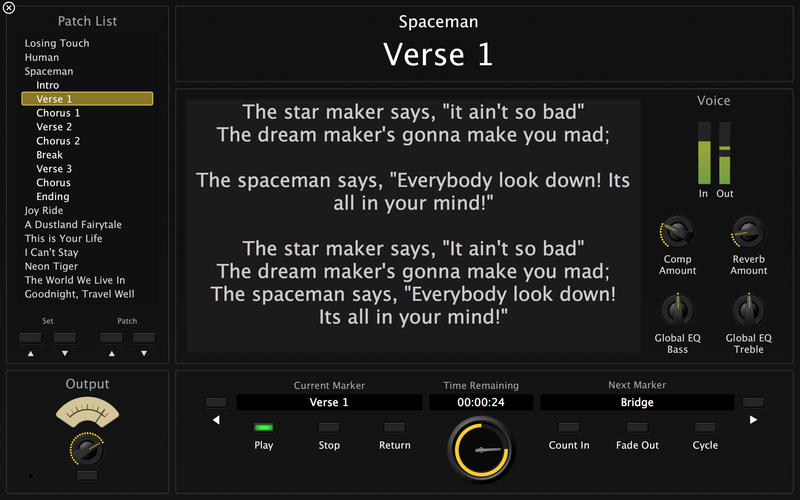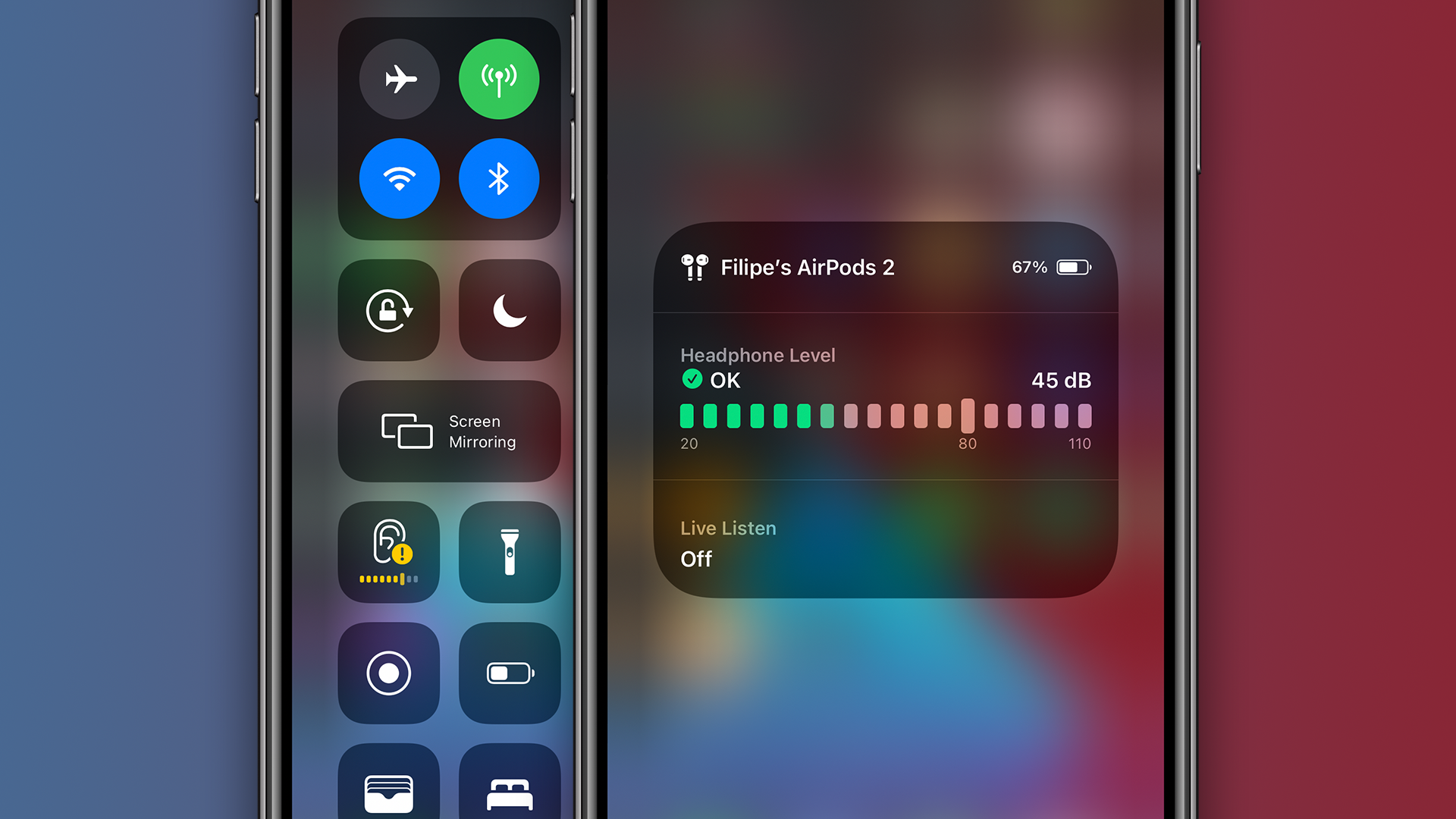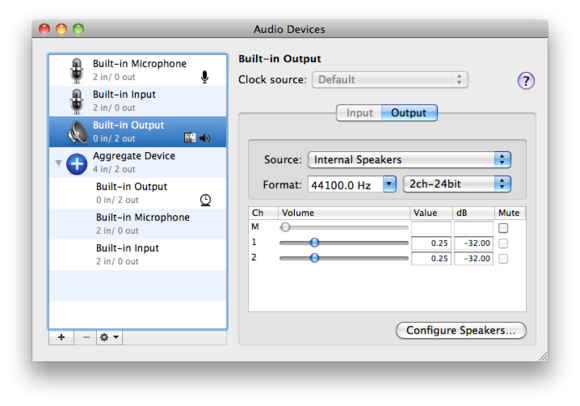There's a hidden volume control in your Mac menu bar. Menu bar applications on Mac give you quick access to your most important settings. But with this trick, you can control even more from the. SoundSource 4 is a menu bar utility for changing the volume, output, and audio device settings for individual apps, with support for adding built-in or third-party audio effects in real time. Aug 10, 2018 To get the best sound possible from your Mac, it’s best to commit to two approaches in tandem: investing in effective sound gear, whether headphones, speakers, or both, and boosting your Mac’s sound performance with iTunes features and additional apps that promote loud yet clear sound.
- How To Add App To Sound Control Mac Download
- How To Add App To Sound Control Mac Os
- How To Add App To Sound Control Mac Download
Native Mac apps built with Mac Catalyst can share code with your iPad apps, and you can add more features just for Mac. In macOS Big Sur, you can create even more powerful versions of your apps and take advantage of every pixel on the screen by running them at native Mac resolution. Apps built with Mac Catalyst can now be fully controlled using just the keyboard, access more iOS frameworks, and take advantage of the all-new look of macOS Big Sur. There’s never been a better time to turn your iPad app into a powerful Mac app.
Designed for macOS Big Sur.
When an app built with Mac Catalyst runs on macOS Big Sur, it automatically adopts the new design. The new Maps and Messages apps were built with the latest version of Mac Catalyst.
Get a head start on your native Mac app.
Your iPad app can be made into an excellent Mac app. Now’s the perfect time to bring your app to life on Mac. The latest version of Xcode 12 is all you need. Begin by selecting the “Mac” checkbox in the project settings of your existing iPad app to create a native Mac app that you can enhance further. Your Mac and iPad apps share the same project and source code, making it easy to make changes in one place.
Optimize your interface for Mac.
Your newly created Mac app runs natively, utilizing the same frameworks, resources, and runtime environment as apps built just for Mac. Fundamental Mac desktop and windowing features are added, and touch controls are adapted to the keyboard and mouse. By default, your app will scale to match the iPad’s resolution. On macOS Big Sur, you can choose “Optimize interface for Mac” to use the Mac idiom, running your app using the native resolution on Mac. This gives you full control of every pixel on the screen and allows your app to adopt more controls specific to Mac, such as pull-down menus and checkboxes.
Even more powerful.
The new APIs and behaviors in macOS Big Sur let you create even more powerful Mac apps. Apps can now be fully controlled using just the keyboard. You can create out-of-window and detachable popovers, control window tabbing using new window APIs, and make it easier for users to select photos in your app by using the updated Photos picker. iOS Photos editing extensions can now be built to run on Mac. And your app is even easier to manage when it’s running in the background with improved app lifecycle APIs.
New and updated frameworks.
Mac Catalyst adds support for new and updated frameworks to extend what your apps can do on Mac. HomeKit support means home automation apps can run alongside the Home app on Mac. The addition of the ClassKit framework lets Mac apps track assignments and share progress with teachers and students. Plus, there are updates to many existing frameworks, including Accounts, Contacts, Core Audio, GameKit, MediaPlayer, PassKit, and StoreKit.
Tools and resources.
Download Xcode 12 and use these resources to build native Mac apps with Mac Catalyst.
HELP FILE
Using the Control Panel (Windows and Mac)
To get the most out of GoToWebinar, you can download and install the full-feature desktop software on your Windows and Mac computer. This allows you to access all of our great collaboration tools, including drawing tools, shared keyboard/mouse control and multi-monitor screen sharing.
When you start or join a session using the desktop app, the app's Control Panel provides you with access to all of the in-session features and tools that GoToWebinar offers!Features and tools
(a) Mute/unmute- Mute and Unmute Yourself – Mute and unmute your audio during the session if you are connected using built-in audio services.
- Share Your Screen – Share your desktop, an application or a document with attendees.
- Change Presenter – Change presenters so that another participant can share their own screen.
- Give Keyboard and Mouse Control – Share keyboard and mouse control with other participants while you are sharing your screen. Note that attendees who joined using a method other than the desktop app (such as the Instant Join app or mobile apps) will not be able to use this feature.
How To Add App To Sound Control Mac Download
(c) Share your webcam
- Share Your Webcam – Preview your webcam before sharing with others, then turn on your webcam to work face to face with attendees.
 (d) Manage your audio mode
(d) Manage your audio mode- Switch Audio Modes in Session – Switch between computer audio and dialing in via phone and access the Sound Check.
- Enable/Disable On-Hold Beeps and Entry Chimes – Manage the audio controls (e.g., on-hold beeps, entry/exit chimes).
- See the Audience View – See a preview of what your attendees are seeing to make sure your presentation is on point!
- View and Manage Attendees – View the names of all individuals participating in the session, as well as access mute controls and other options.
- Invite Others – Invite attendees to join while you are in an active session.
- Add Co-Organizers – Make someone a co-organizer so that person can have full control over the session and/or continue running the session after you leave.
- Add Panelists –
Panelists are members of webinar staff who can speak, present, share webcams and answer assigned questions during a session. You can either add panelists before a session starts or promote attendees to panelists during the session.
- Send Chat Messages – Send chat messages to all participants, or only to member of your staff.
- Record a Session – Record the presenter's screen, audio and shared applications during a session, then upload and store the recording for people to view.
How To Add App To Sound Control Mac Os
- Use Drawing Tools – Use drawing tools to draw on your shared screen and better illustrate points. Note that attendees who joined using a method other than the desktop app (such as the Instant Join app or mobile apps) will not be able to use this feature.
- Dashboard –
The Dashboard allows you to monitor the session at-a-glance. You can quickly view the timer (duration of the session), attendance, audience attentiveness, questions and raised hands.
- –
Polls allow you to ask attendees a question during a session, then to broadcast the results immediately. Unlike tests, polls are only a single question and are meant to collect real-time feedback and promote attendee interaction.
- Question and Answer –
During a webinar, attendees can ask questions in the Questions pane. Organizers can sort the questions, flag them with priority, and assign them to other organizer or panelists in the session.
- Share Handouts during Webinars –
Organizers can increase the attendee engagement by sharing handouts during the webinar. Handouts are images, copies of presentations, content marketing assets, or Microsoft Office files (any PDF, DOC, DOCX, XLS, XLSX, PPT, PPTX, WMV, MOV, MP3, MP4, JPEG, GIF, and PNG file types less than 100MB) that are made available in the Control Panel during the session, which attendees can then download onto their own devices.
Switch between Control Panel and Grab Tab
Even when the Control panel is minimized into the Grab tab, the most critical features remain accessible with just one click: Mute, Share Screen and Share Camera.- To shrink the Control Panel into the Grab Tab, click the Shrink icon in the left navigation.
- To expand the Grab Tab into the Control Panel (e.g., show all panes), click the Expand icon in the left navigation.

Related Articles
How To Add App To Sound Control Mac Download
- How do I practice a webinar?
- How do I start a scheduled webinar?
- How do I start a Webinar Now?
- How do I start the webinar broadcast?